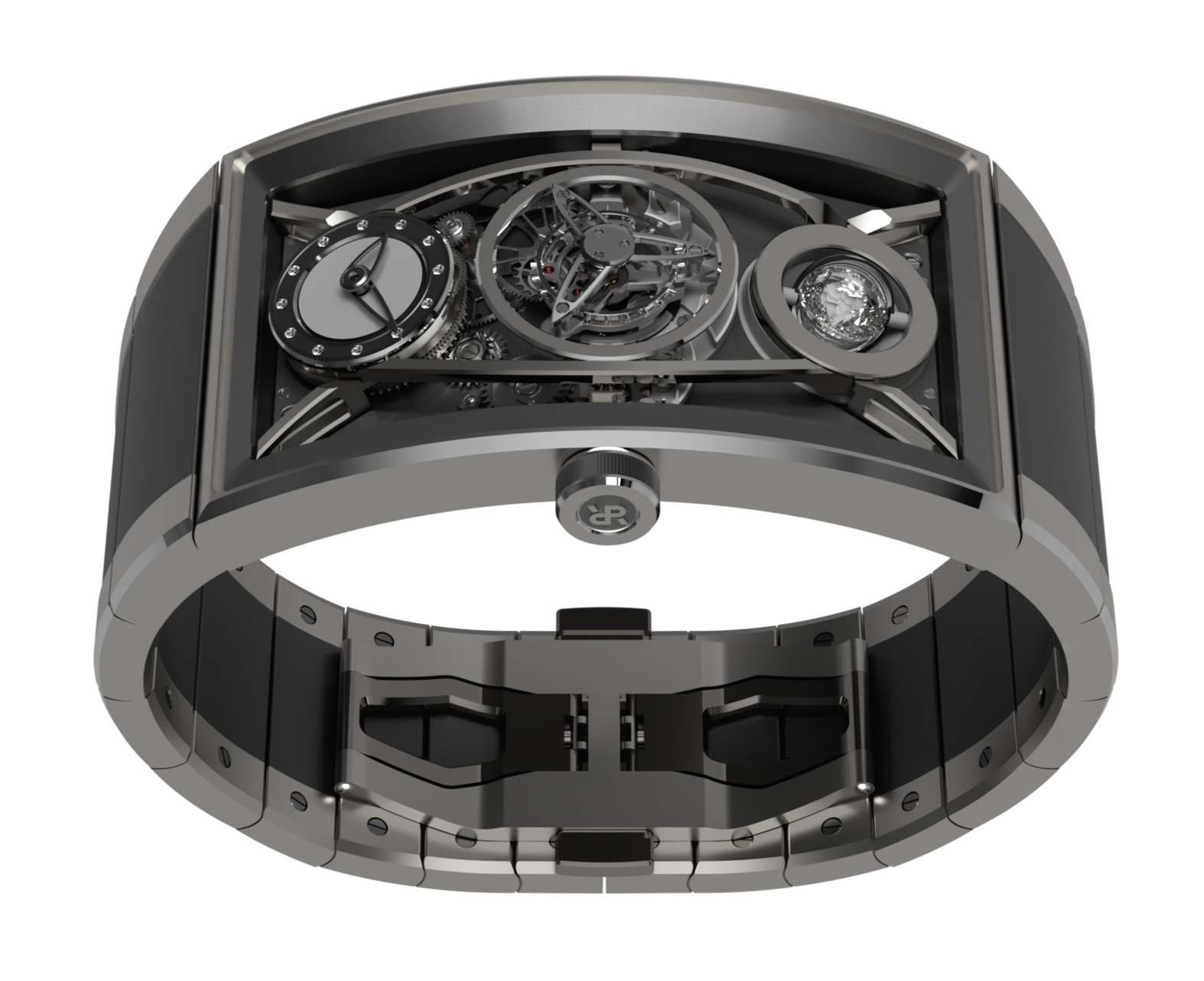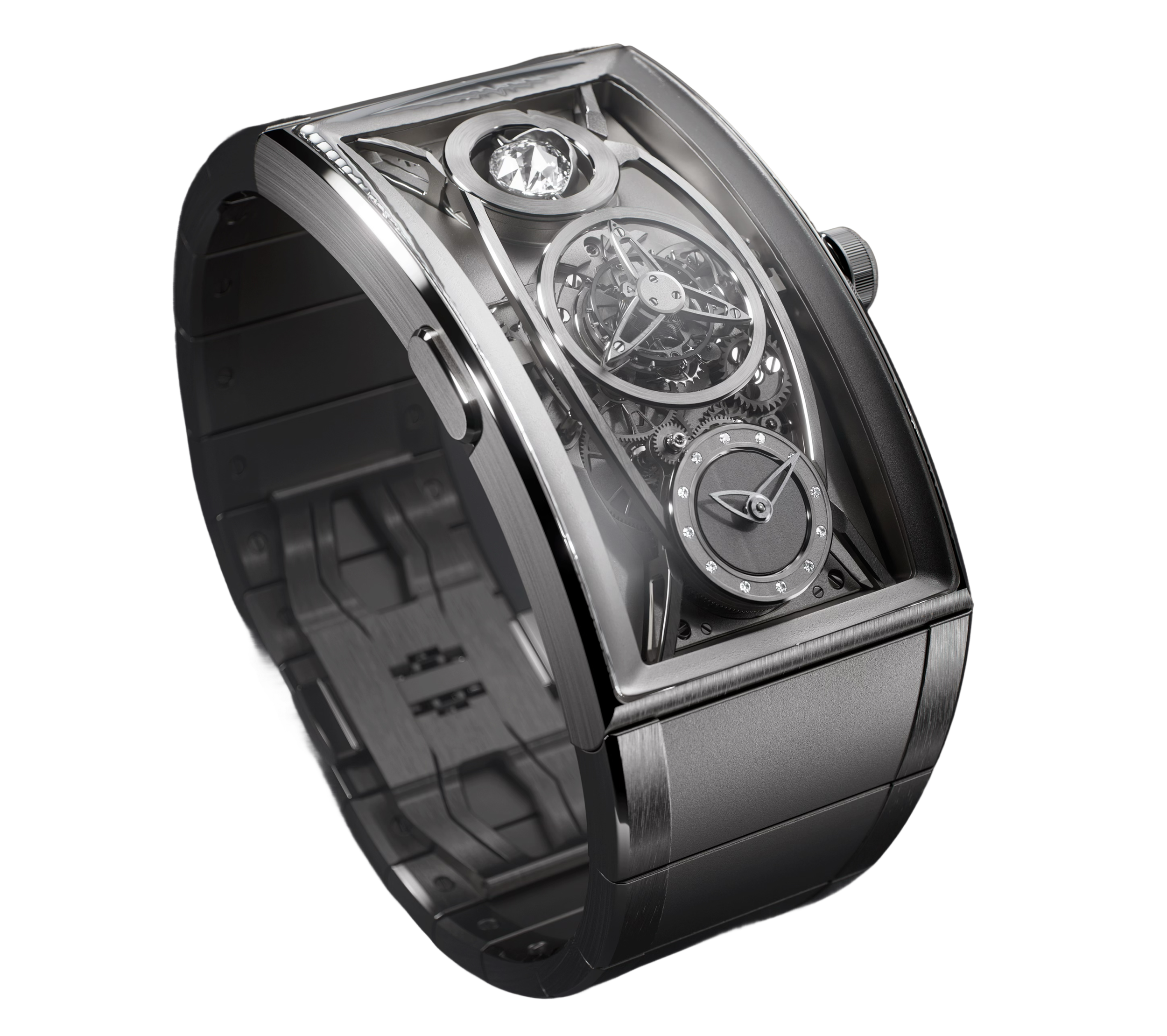The passage of time is the constant by which all experience, memory, projection and expression is anchored.
Our Cornerstone
From the sundials that proliferated throughout the ancient world to the atomic clocks that power our current digital landscape, humankind’s progress has always been defined by our ability to measure time more precisely. Horological objects reflect this story: they are scientific instruments, cultural artifacts, and highly expressive works of art — often all at once.
As we descend deeper into the digital age, the mechanical watch has become something else entirely: a physical vestige of the pre-digital world. Its value lies far beyond its utility. It resides in its permanence and in what it says about us and the mysteries of time that are yet to be discovered.
This is the foundation of the brand: to create enduring objects that speak to time’s central place in human history, while acknowledging that the nature of time itself remains elusive.
Objective Layer:
The Watch as Physical Object
B-Theory, the first model within the inaugural collection from Pattern Recognition, is a curved astronomical tourbillon wristwatch that embraces the eclectic story of time measurement through both overt and subtle details.
Its architecture is defined by a curved case and 3-plane movement designed for ergonomic precision. The elongated form houses complications arranged along a longitudinal axis — beginning with a lunar display set to the wearer’s home sky, moving through a central flying tourbillon, and ending with a discreet time display on the inner wrist.
Every component and surface has been approached as both a functional mechanism and crafted object. Techniques rooted in centuries-old horology are combined with contemporary technologies and advanced materials — from injection-molded polymer crystals to hand-decorated bridges.
An interchangeable systems allows the wearer to alternate between a meticulously hand-decorated bracelet and an assortment of different coordinated straps.
The watch is produced in collaboration with leading specialists and ateliers across Switzerland, the principals of whom have been former colleagues of Pattern Recognition’s founder, Michael Friedman and Head of Operations, Nathalie Toubin during their many years at Audemars Piguet. These include Fabrice Deschanel (Artime) as well as Axel Leuenberger and Jeremy Frelechox (Vanguart), bringing together veteran talent from the most revered houses to realize Pattern Recognition’s vision.
Subjective Layer:
The Watch as Narrative Object
B-Theory’s curved bridge design is inspired by ancient Egyptian scarab amulets that symbolize the sun, rebirth, renewal, transformation, and growth. This creates a natural duality with the moon above and the sun below, completing the cycle of celestial motion. The bridges echo these sacred forms, merging antique symbolism with modern execution.
Act I: Our Astronomical Origins
We begin with the Moon at the uppermost section of the case, as all early systems of time measurement were derived from local astronomy. This moon is crafted from a 6 mm custom lab-grown diamond and features a cover that opens and closes as it waxes and wanes. Precisely set to the home location of the owner, the moon’s position on the watch corresponds to its appearance in the designated night sky. All of the gearwork for the moon is concealed beneath the dial, while the pusher is discreetly placed on the opposite side of the case from the crown.
Act II: Whirlwind at the Center
At the heart of the piece lies the flying tourbillon, a mechanism that captures our enduring desire to measure and master time. Its architecture, inspired by the orbits of electrons around a nucleus and by the international symbol of atomic energy, reflects the precision and symmetry found in nature itself. Hand-wound and hand-finished, the tourbillon transforms mathematics and engineering into movement. It stands as a reminder that every attempt to quantify time is also an expression of wonder.
Act III: Temporal Reflection
An intimate display of time, placed discreetly for the wearer alone. Inspired by the ergonomic ease of reading the time on a driver’s watch, the display features white-gold hands and diamond indexes on the inner wrist, allowing a natural glance at the passing hours. The aesthetic recalls the curved elegance of early twentieth-century design—the Cartier Tank Cintrée, the Movado Polyplan, early Patek curved watches—while remaining unmistakably contemporary.
In this way, B-Theory exists on two planes: as an expressive instrument of time and as a cultural artifact.
Specifications
Titanium Curved Astronomical Tourbillon Wristwatch
Longitudinal Moon-Cut Diamond Lunar Display with domed aperture
Central Flying Tourbillon
Diamond-set hour markers with white gold hands
Quick release detachable bracelet with interchangeable straps
Overall Dimensions
32mm wide
52mm long
9.9mm height
Bracelet version: 150,000 CHF
Strap version: 120,000 CHF
Availability:
1st deliveries in Q3 2026
Founder
Pattern Recognition, founded and conceived by Michael L. Friedman, represents the culmination of a thirty-year journey into the nature of time and its material expression.
Friedman, a historian, designer, and cultural theorist of horology, established Pattern Recognition as an extension of his lifelong pursuit to interpret time through objects that unite scientific precision with human meaning. His career spans three decades of scholarship and creative direction. After formative curatorial posts at the Willard House & Clock Museum and The National Watch & Clock Museum, he became Head of Watches at Christie’s New York and later established MLF Horology, advising institutions and collectors worldwide.He previously worked with Audemars Piguet as Historian and Head of Complications, embracing his simultaneous pursuits of history and futurism. He is the co-author of Audemars Piguet 20th Century Complicated Wristwatches and has contributed to numerous articles, books, videos, and films.
B-Theory stands as both artifact and idea, a synthesis of astronomy, physics, and craft that reflects Friedman’s belief that every measure of time is, at its core, a measure of human imagination.
Contact
Discover
GQ: The Watch World’s Secret Weapon Is Going Solo
Hodinkee: Catching up and sharing stories with Ben Clymer
Collectability Podcast: Michael Friedman shares his passion for horology Part 1
Collectability Podcast: Michael Friedman shares his passion for horology Part 2
Monochrome: A focus on the Grand Sonnerie complication
Origin stories and Tourbillon talk with Nicholas Biebuyck
The Rake: Riffing with the Rake on the more cultural and philosophical aspects of horology










